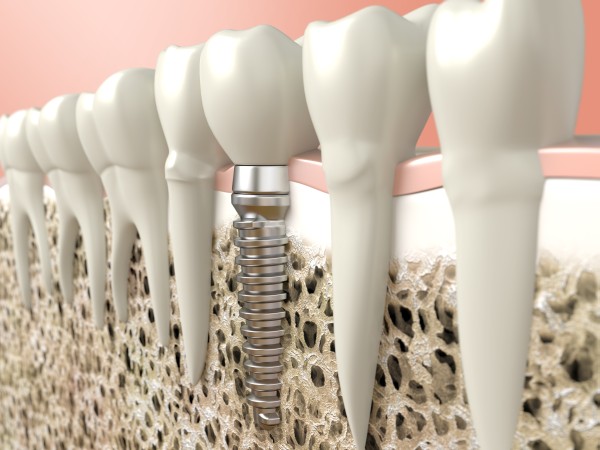 More people are getting dental implants than ever before. This is because people around the country have discovered that they do not have to live with the stigma of tooth loss. Tooth loss can be extremely traumatic for some people, especially when the tooth loss happens at a young age. Dealing with the embarrassment is compounded by the fact that tooth loss forces people to make lifestyle changes, including how they eat and speak. With dental implants, you do not have to deal with those kinds of changes.
More people are getting dental implants than ever before. This is because people around the country have discovered that they do not have to live with the stigma of tooth loss. Tooth loss can be extremely traumatic for some people, especially when the tooth loss happens at a young age. Dealing with the embarrassment is compounded by the fact that tooth loss forces people to make lifestyle changes, including how they eat and speak. With dental implants, you do not have to deal with those kinds of changes.
There are numerous technologies and methods for dealing with tooth loss. However, none are as advanced as dental implants. While dentures and bridges address the fundamental problem, which is a missing tooth, they do nothing to brace the tooth or to address the root of the problem. This means that these solutions have to be adhered to the surface of the mouth somehow, typically with wires or dental cement. On the other hand, dental implants focus their attention on the root. In fact, a dental implant is a tiny titanium screw that is placed into the jawbone, taking the place of a natural tooth’s root. This provides a strong and stable platform under the gum line, which then allows us to place a dental crown, or tooth, on top of the abutment.
Getting dental implants is a lot simpler than it used to be a few years ago. Simultaneously, science continues to dispel some of the popular myths that surround dental implants. For the longest time people have been looking at dental implants, and elsewhere around the country, as a purely aesthetic endeavor. This is an understandable misconception. When you get a dental implant, you are going to be getting a perfect tooth that is almost an identical replica of your original one. There are no wires holding it in place, so all you have is a new tooth. In fact, we can give you a tooth, or teeth, that look far better than your original ones. Naturally this perfection has led to the idea that all we care about is the aesthetics. Nothing could be further from the truth, and science is starting to show this. We know, for example, that when you use a dental implant to replace a lost tooth, the implants acts like a naturally occurring root. It creates a symbiotic relationship with the jawbone, which in turn allows the jawbone to receive stimulation from the prosthetic. This helps the jaw to avoid resorption and also keeps the facial structure from a potential collapse.
There are already 3 million people across the nation that have gotten dental implants. What we know is that the rate of dental implants is increasing annually, but that there are a lot of people still using antiquated technology. In our dentist office, we encourage every one of the 15 million Americans that are using bridges or dentures to consider switching to get the best looking, most effective, longest lasting tooth replacement available today.
Related Posts
The Role of the Jawbone in Dental Implant Placement
If a lost tooth is not replaced by replacement options like dental implants, you may find normal oral functions like eating and speaking somewhat challenging. The smile’s alignment and appearance will also …
Contraindications to Dental Implant Placement
While dental implant placement is one of the most effective ways to replace missing teeth, there are some scenarios in which these implants cannot be placed. Because dental implant placement requires surgery, …
Reasons to Consider Dental Implants to Replace Multiple Missing Teeth
Considering dental implants to replace missing teeth?No matter how it happens, having missing teeth can make anyone feel self-conscious. Instead of smiling naturally, people with missing teeth tend to hide their …
What to Ask Your General Dentist About Multiple Dental Implants
General dentists offer dental implants to patients with missing teeth to address cosmetic, functional and oral health concerns. Many patients do not know how to prepare for the consultation visit for …
